
Read my Writings | Browse my Artists | Shop for my Goods & Services | Join my Network
This is a re-post
On Friday May 2nd, around 7pm, Kevin McCoy completed transaction #1217706 on the Namecoin block chain. McCoy was taking part in Rhizome’s Seven on Seven, the fifth annual conference pairing up of artists and technologists at the New Museum. And that transaction through Namecoin, one of the countless spinoffs of Bitcoin, created an entry in a public ledger of exactly which bits are changing hands between two people.
But this transaction was different from the millions of other ledger entries tracked by Bitcoin and its variants.

This time, the bits being traded weren’t just tracking a virtual currency. Instead, they were tied to an original digital artwork created by established artists, becoming the first to follow a new convention called “monegraph”.
There has been hand-wringing about the fate of digital artists for at least as long as there has been digital art. But as most everyone’s computers got connected over the last two decades, the most fundamental cause of concern has been the effortlessness with which any given work can be instantly, and perfectly, copied. In a realm where novelty, rarity and exclusivity underpin so much of the (real or perceived) value of a work, copy and paste goes from being an act of creation to an act of destruction.
Reblogging is essential to getting the word out for many digital artists, but potentially devastating to the value of the very work it is promoting. What’s been missing, then, are the instruments that physical artists have used to invent value around their work for centuries — provenance and verification.
Provenance for an artwork can be asserted in countless ways, from witnessing performance art firsthand to having a world-famous auction house bet its credibility on whether a work is an original or not. This function is critical not just in enabling an economic art market, but also in the study and understanding of individual artworks and their context within a movement or culture.
Verification, on the other hand, takes on a new urgency in the digital realm. In this context, verification means the validation that a work is unchanged from its original form, and that the work in question is the actual work being discussed as a creation. It has, of course, always been possible to forge a work (and this is one of the issues meant to be solved in physical art by checking provenance), but there’s a more philosophical debate about verification in the digital realm, where simply viewing an image in a web browser results in a copy being made on the viewer’s computer or phone.
Various efforts have been made to assert forms of provenance and verification for digital art over the past few decades, but most relied on the artworks to remain within closed, proprietary technological silos; few were designed to verify a work while also allowing it to be widely displayed across the Internet. As a result, the only way for artists to really build a market around their digital works has been to convert them into physical forms.
At the opposite end of the technological spectrum from experimental artists, we find the Bitcoin community. For the past few years, its members have been boundlessly enthusiastic about a technology that, for most Internet users, is hard to understand and even harder to put to use. We are so used to hyperbole that it may not be clear, but Bitcoin really is a new technology. And the block chain technology that enables it absolutely is groundbreaking.
What the technology behind Bitcoin enables, in short, is the ability to track online trading of a digital object, without relying on any one central authority, by using the block chain as the ledger of transactions. The problem is that the conversation about these inventions is insular even by the standards of the tech industry, populated with fake Satoshis and genuine Winklevii.
Perhaps the most damning critique of the Bitcoin community is to point to what passes for innovation. Bitcoinists tend to focus on a series of nearly-identical clones of the original currency, distinguished only by increasingly esoteric names. There’s Dogecoin, after the ubiquitous shiba pidgin meme. Litecoin, “lite” because it can run on cheaper computers. Coinye came closest to connecting with a working artist, by dint of having been an unauthorized appropriation of Kanye West’s name. What Bitcoin projects mostly haven’t tackled are big challenges in civics or activism or art, aside from is-this-a-joke projects like the Bitcoin Art Gallery. There is no gastrocurrency or cartocurrency. There is only cryptocurrency, an egregious coinage coinage.
It’s increasingly clear that a virtual currency is perhaps the most boring thing one could create with Bitcoin technology.
This disconnect from the real world is pervasive even though some of the biggest names in the venture capital industry have poured tens of millions of dollars into Bitcoin and related technologies. Though it’s still early, the primary focus of this enormous infusion of normocurrency thus far has been a series of “digital wallets”. You know digital wallets — every other year Google, or Microsoft, or Square, or other tech titans try to get you to pay for things by storing your credit card number in their online services. The new products seem to promise to combine the unpopularity of digital wallets with the inscrutability of using Bitcoin in lieu of your credit card.
Today’s Bitcoin converts too often sound like someone waxing enthusiastic about the Lemonade Stand game on their old Commodore 64. It’s clear that geeks are having fun creating a virtual market, but it’s hard to understand how almost anyone else would benefit from it.
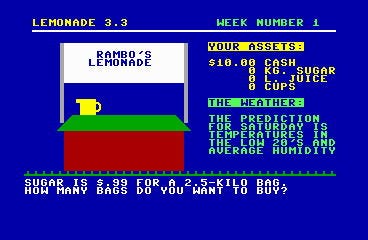
Rhizome’s Seven on Seven conference has an august history, bringing together formidable artists with truly credible technologists, at least until I got picked as one of those technologists. Held at the New Museum, this year’s event set the bar high from the start, opening on Saturday morning with a corker of a keynote from Kate Crawford followed by an excerpt from a video of the late Aaron Swartz discussing his 2012 collaboration with Taryn Simon, Image Atlas.
Kate’s characteristically brilliant presentation contextualized normcore and the NSA and drones and Occupy, in case anyone worried that every Big Important Idea couldn’t fit into a single talk. Following that with an evocation of tech’s most besainted young activist was enough to move anyone in the audience, not just those of us who were his friends. And then six pairs of extraordinarily talented artists and technologists followed. We still had a full seven hours to go until we were scheduled to present.
Kevin McCoy and I were batting cleanup together. Kevin and I had met just 48 hours earlier, with no introduction and little instruction except that we would have one day to create something we wanted to share with this audience. Within five minutes of our initial introduction, we knew exactly what we wanted to build. Each of us had been ruminating about the potential applications of Bitcoin’s block chain technology to the realm of digital art for months. Given the pedigree of the event, we knew we would have to at least present an idea worthy of Seven on Seven, even if its execution were necessarily compromised by the 24-hour deadline on which it was created.
I’ll skip past the typical hagiographic creation myth here to instead emphasize the fact that much of this idea was not novel. Indeed, many people have been pondering this exact combination of art and technology — enough that Kevin and I asked each other several times, “Why the hell hasn’t anyone done this before?” Just some of the influences on our thinking:
The kind of subcultural shadiness that’s associated with the crypto-currency seems to indirectly address the concerns of an unregulated art world, and the very structure of the currency provides a direct parallel to how value is constructed in the art world. Like Litecoin’s “block chain,” a built-in algorithm that creates a digital trail of every transaction ever executed, the art market uses provenance to construct value. The coins themselves may be just swag, but they’re now packaged as a known asset class, poised to take on a new value as art.
All of this to say: Ain’t nothin’ new under the sun. And yet, for all the conversation, and all the people who’ve been ruminating on provenance and verification in a digital world, we hadn’t seen the pieces come together until now. That little bit of hacking Kevin did last Friday night may mark the moment that everything went from theory to practice.
Behold:
Monetized Graphics
Jennifer and Kevin McCoy have been digital art pioneers for two decades. Just a brief glimpse at their work zips through television and DVDs and the web and GIFs and sculpture and software. And the themes that emerge push deeply into how we share experiences, what our cultural memory is around media, what becomes of time and distance in a digital world. This is work with meaning, with presence. In more recent pieces, seeing some of these works captured in physical form seems to be constraining them as much as it is containing them. It’s clear the future of their work requires being freed to be even more a part of the Internet.
Exemplifying this evolution is cars.gif. Created by Kevin for the monegraph project from a video that Jennifer and Kevin had created years ago, cars.gif became the first block chain-verified digital original just a few hours after we started working on the project.
We picked the phrase “monetized graphics” on a lark.
Even days later, we never stopped laughing at how “monetized graphics” captured an absurdly crass version of how people would interpret a market for digital art. By the time we would begin to demonstrate the concept, we were sleep-deprived enough that it seemed likely nobody would get the joke. Maybe “monetized graphics” was the kind of thing that only seemed funny if approached with the mindset of an undergrad who’s been cramming for an exam all night.
Fortunately, when we showed the introductory video (above) at the New Museum, the crowd seemed to go along with us. They were in on the joke. We followed the ridiculous video with a quick explanation of the format that Kevin had come up with to ensure provenance and verification, which we had dubbed “monegraph” — a serendipitously pleasing concatenation of “monetized graphics”.
What had become clear was that, for any given digital work, it only takes two steps to ensure its originality. First, a public claim to ownership or creation of that work has to be asserted. And second, that claim and a representation of the work itself has to be captured in the block chain, so there is a public record in the ledger and a way to record any transfers of that title in the future. Thus, there are just three key parts to verifying digital art with monegraph (here with examples of each):
Despite being the “technologist” of our pair, I am also a worse programmer than Kevin, so I set about creating a simple website for monegraph that would accept your Twitter login and the web address for your work, and give you a tweet to make your claim, along with the information to put in the block chain record.
Meanwhile, Kevin set about creating the format for that record, ensuring that it would be a flexible and intelligent starting point for these kinds of technologies. While it’s easy to imagine an implementation that might have involved creating yet another new Bitcoin clone, Kevin decided in the interest of expediency to piggyback on Namecoin, which had been designed with a little bit of room for storing extra information like the records we were hoping to create. Namecoin had an existing block chain, and monegraph would make use of it to store its claims. That accommodation in Namecoin’s design was a result of brilliant thinking in the early days of Bitcoin, imagining what its most inventive purposes might be; the definitive articulation of that thinking was in a brief essay by Aaron Swartz.
The end result of a day’s work on monegram is that almost anyone with a Twitter account could claim a digital image, get back a chunk of specially-encoded information representing their record, and then copy and paste that chunk into a Namecoin program and have a verifiable record of their claim. At current Namecoin exchange rates, it costs about four cents to make a record for a new artwork, or to transfer a title to an artwork.

To be sure, this was a hacky way of doing things. The app you have to use to get a Namecoin address and enter in these records looks like some abandoned system utility from Windows 95. There’s presently no place for a normal Internet user to go and even download the Namecoin app because they’re redoing their website. If you have an iPhone, you’ll never have a Namecoin app because Apple doesn’t like Bitcoin and its variants. The state of the art is, well, impossible.
And yet. If you were willing to hunt down the nerdy bits needed, and to put up with the annoyances and inconveniences, something new was happening. In the room at the New Museum, the minute that Kevin transferred ownership of one of his animated GIFs to me (I paid him four bucks out of my wallet in exchange for the Namecoin transaction), it was clear that there’s something interesting here. Some really good questions are being raised:
These are the questions that a work like monegraph is meant to enable. But as with any new idea, it can be difficult to reckon with the implications. Steven Melendez asserted that monegraph could “eradicate fake digital art”, when this is exactly backwards. In fact monegraph makes it possible to have “fake digital art”, because prior to this we had no consistent way of defining an “original”.
Fortunately, we’re also seeing people joining the conversation around these ideas. Whitney Mallett summarized some of the most tantalizing potential:
Blockchain-verified digital art could catch on, and if it did, it could create a more traditional model of authorship for net artists as they negotiate the murky world of authorship and ownership online.
What’s clear is that this conversation will be happening in studios and museums, amongst non-profits and artists’ workshops, between coders and curators. Where it doesn’t seem to have taken root is in the most conventional venues of the technology industry. When Kevin and I were asked to represent Seven on Seven by demoing monegraph to the crowd at the TechCrunch Disrupt conference, we began with the title “monetized graphics”, just as we had at the New Museum.
The museum crowd had seen “monetized graphics”, understood the tone and intuitively understood why we’d chosen that ridiculous name. But in a room full of people who were otherwise enthralled by Bitcoin as a technology, the absurdity read instead as a straightforward goal, eliciting almost no reaction. We explained the details of Namecoin transaction #1217706, and why it was significant to artists and creators of all stripes.
There were no questions from the audience.
Thanks to Quinn Norton, Kevin McCoy, Rex Sorgatz, Kate Lee, Evan Hansen, Zeynep Tufekci, Clive Thompson, and Paul Ford
xDALE is a Smart Contract Real Estate Marketing Organization. It can be seen as the “Un-Broker”.

The Real Estate Services industry is rife with red tape and other inefficiencies. It is an environment based on paranoia. The proprietors are paranoid about wire transfer fraud, excessive fees. The lawyers are resentful of the high compensation paid to brokers and the brokers resent the fastidious lawyers who kill more deals than bad credit. Furthermore, the listing agents resent having to co-broke a listing and often withhold access to potential customers. This does a disservice to the Landlord. There is a lot of leg work involved which requires pre-qualification of the customer. Finally, the customer often hides the truth of his personal background for fear of application denial. In many cases he must pay creative deposit fees, move-in fees, and application fees.
All these elements come after the rigorous search for available listing and many proprietors want to do it themselves and do not subscribe to a MLS. Therefore, a confusing multitude of alternative websites now pop-up to host listings. The solution to these inefficiencies are self-managing smart contracts. The following are some XDALE-Benefits to the players in a real estate transaction.
SALESPERSONS
BROKERS
LANDLORDS
CUSTOMERS
If you wanted to rent your apartment to someone, you’d need to pay a middleman such as Craigslist or a newspaper to advertise, and then again you’d need to pay someone to confirm that the person paid rent and followed through.
A decentralized solution can help cut your costs. All you do is pay via cryptocurrency and encode your contract on a smart contract. Everyone sees, and you accomplish automatic fulfillment. Brokers, real estate agents, hard money lenders, and anyone associated with the property game can profit.
Smart contracts are revolutionary in terms of transforming the current real estate practices.
Smart contracts are replacing traditional contracts as the sole agreement between the seller and buyer. It automatically executes the requirements as soon as specific conditions of the contract are met.
Smart contracts guarantee trust through a single version of the truth by establishing trust. All the parties including the bank, the agent, and the mortgage lender can sign an agreement via smart contracts. Because transactions are kept on a blockchain, this shared ledger enables the parties involved to look over the process at any moment and from anywhere.
A smart contract is a self-executing digital agreement that enables two or more parties to exchange money, property, shares, or anything of value in a transparent, conflict-free way while avoiding the need for a third party.
Smart Contracts are Awesome! |
Autonomy |
Trust |
Backup |
Safety |
Speed |
Savings |
Accuracy |

Hello You

There is no denying that the modern world has changed over the past 18 months. In subtle ways, disruptions in lifestyle have been met with new methods of doing business.
The Bitbrowze platform upon which rests dApps such as Real-T and Xeries has been released. These smartcontracts usher in new possibilities to conduct business more privately and securely than ever. Blockchain technology has matured and is adopted globally for various endeavors from currency to the ballot box.
We once asked with respect to Real Estate, “Who needs the middleman, such as a real estate broker? Now we ask further, who needs a middleman, such as a retail banker? What do these people actually do for you? Retail bankers rely on a centralized computer system that adds your demographics and other data to a centralized database that belongs to the bank. The other data is a record of your assets. Those assets are called currency, which are pieces of i.o.u-paper that is owed to you by the Central Bank. All this digitized private information is at the mercy of those strangers. Not to mention that it is shared by the most intrusive big brother of all that can make hell for many people – The Credit Reporting Agency! For this privilege, you actually pay them more than the few percentages in “interest” that they pay you on a savings account. The net loss is yours.
Decentralized banking is a term that has been construed in the wake of the cryptocurrency boom. … The people needed in a bank to approve loans and to structure financial data are replaced in a crypto banking ecosystem by smart contracts and p2p, peer-to-peer, services.
As the world heads to a recession and economic uncertainty, a new, parallel financial system is emerging. It is digital and runs on top of a public, permissionless blockchain ledger: Ethereum.
In contrast to the current financial system, it is open, neutral, and accessible for everyone with an Internet connection. It is radically transparent, in real-time auditable and its rules are written in open source code. It offers us novel, empowering ways for generating the saving and the transmitting of value, with independence from banks. A retail-first system that promises to transform and democratize access to financial services worldwide.
Simply put DeFi is the collective name given to an ecosystem of financial applications built on top of the blockchain also known as Decentralized Banking. … Within this ecosystem, the users have full control over their assets and they can interact with the ecosystem through decentralized applications (dApps).
08/01/2020
In the previous issue, we talked about the features and benefits of two distributed Apps that can be accessed via our BITBROWZE graphical web interface.
Bitbrowze is an interesting initiative. It reminds me of a Swiss Bank account for your transactions.
Sell or Lease anything you own via the Bitbrowze Market page. Manage your properties via the dedicated Bitbrowze/Real-T or the Bitbrowze/Xeries platform. Your data belongs ONLY to you. No one collects your demographic database because no one but you knows your name or what you look like.
But, as your transaction is public knowledge identified by a serial number in the way a telephone number is public knowledge, that transaction is therefore transparent and above board.
A basic subscription to Bitbrowze.com is free. You are encouraged to present your properties of Fine art or Real Estate on the Bitbrowze Market Page in a blind Auction. However, you need a wallet in order to get paid for your transaction. If you don’t yet have a wallet simply request one for a small fee. Otherwise, you can use your regular bank account; but then, there goes your anonymity.
The Premium subscription to Bitbrowze.com is paid. Your identifying serial number becomes a member of the xDale Directory. You get a wallet associated with that serial number. You are incentivized to refer like-minded acquaintances. Your membership serial number becomes linked to their’s as an “ancestor”. If they repeat this process your serial number becomes the ancestor to two levels deep, etc. An ancestor equally gets passive revenue in the form of small referral returns for all transaction three levels deep.
With Bitbrowze, no one is looking over your shoulder. It’s your exclusive prerogative to declare and pay taxes to your jurisdiction.
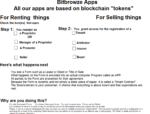
Enjoy the read and stay safe! Best,

Douglas….
-+
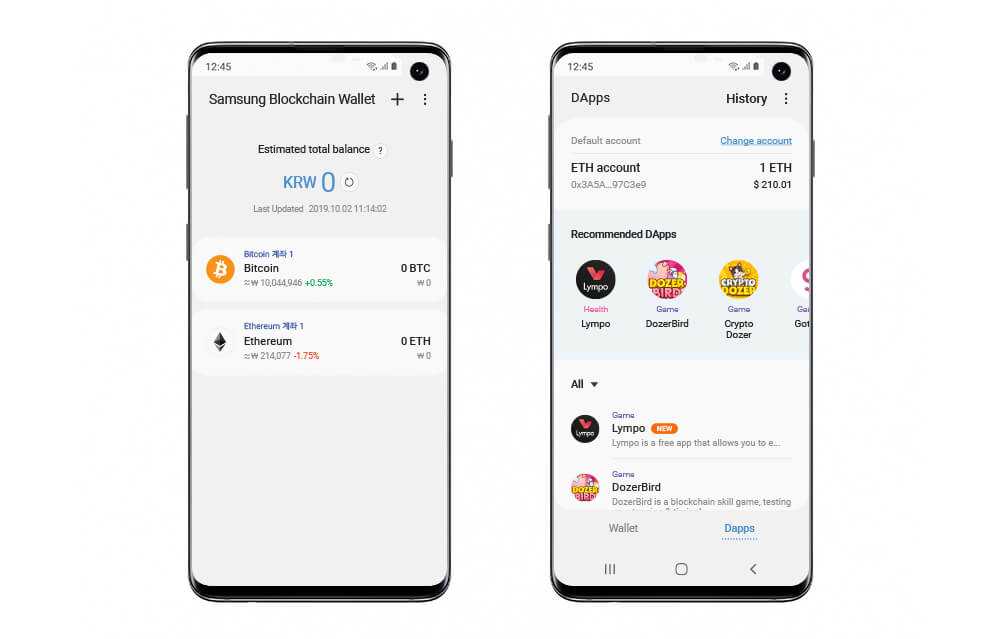

Bringing the mountain to Mohamed.
Who Needs a Realtor? Really. New York State, for example has toyed with the policy of their complete elimination.
Sellers and buyers alike, bridle at paying Real Estate commissions to realtors. In the case of property sales, we have seen the standard rate dwindle from 6% to 1.5% in some cases. With residential rental transactions, commissions have dwindled from 15% of the first year’s lease to “one month’s” rent.
Realtors insist on earning compensation by means of these commissions which has become a haggling process won usually by the most prestigious brokerages. The individual broker fights a disappointing battle. It is hard to bring Mohamed to this mountain.

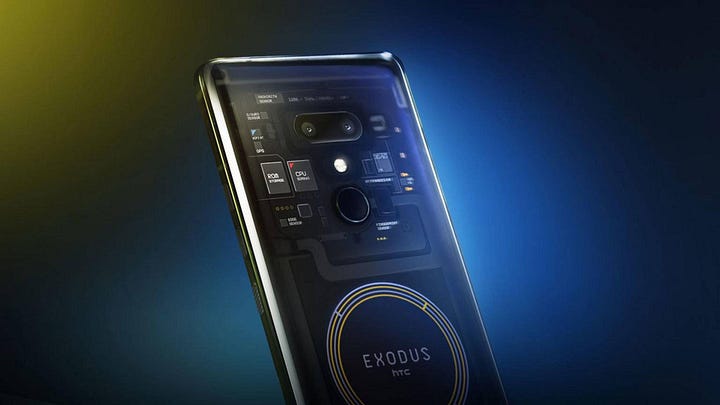 With a blockchain phone you won’t need a central service provider to make calls and access the internet.
With a blockchain phone you won’t need a central service provider to make calls and access the internet.
The Real Estate industry is 99% contractual documents and 1% physical. The Physical aspect is the Construction industry. Realty is actually about the “rights” of ownership and to a lesser degree, rights of agency.. Because 80% of real estate transactions are essentially an exchange of documents like credit reports, applications, deeds, and rental agreements distributed apps convert these to incorruptible smart contracts via new technology. The market for electronic documents coexists easily with traditional paper-based methods. It is simply another arrow in your quiver. With smart contracts there is a reduced need for third party intervention in transactions; This means thousands of dollars in transaction savings. Cross-border transactions are a cakewalk. Transactions are faster by an order of magnitude. Transactions are more transparent and literally immune to fraud. And, so much more.

Traditional interactions are notorious for fraud. Consequently, a host of third parties became involved, each with sometimes conflicting and even adversarial interests. As for lawyers, it is often said that lawyers spoil more deals than bad credit. And agents are paid more fees than lawyers in any transaction. The two are natural adversaries.
RealT is a “Smart-contract”. A smart-contract is an App based on an underlying token. All understandings between parties are automated within the code of the app. You do not need a third-party. You certainly do not need a broker. For the property owner or manager, a token is more efficient, faster, transparent, fraud-proof, cross-border, cost-effective, and …so much more.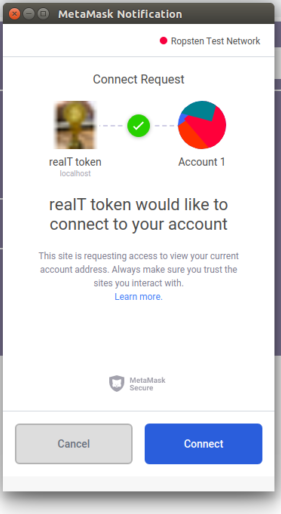 0xf67580838555D2047F5722dc6662cEfD1F97424f Download
0xf67580838555D2047F5722dc6662cEfD1F97424f Download

How does the Word about RealT spread?
In real estate 90% of business is done by word of mouth. How can this be adapted to the world of social distancing. The answer is Multi-level Marketing.
Harvey Rothschild (paywall) has assumed the position of c.e.o. for the direct marketing division of Rothschild Associates.
We do not advertise. Instead, we have retained Rothschild Associates for the promotion of RealT because most real estate transactions are initiated by word of mouth. The perfect marketing tool is their incorruptible MLM distributed app.
Learn more.
July’s Issue: Our ERC20 Utility Token that employs the STO crowdsource method to sell your properties via https://atlant.io/ .
August’s Issue: Title Archive Tokens. Firstly as a proprietor, you should “Futureproof” the deed to your property.
Our role is to promote methods. Blockchain is, indeed a better method.
Hello
You
You’re a Proprietor, a Property Manager
DEAR PROPRIETOR,
I WOULD LIKE YOU TO CONSIDER USING THE GOODS AND SERVICES OF CROSDALE, inc THAT ARE DESIGNED TO MAKE YOUR REAL ESTATE TRANSACTIONS EASIER, CHEAPER, MORE RELIABLE, MORE UNIVERSAL AND FASTER. FROM YOUR COMPUTER, BUY AND/OR MANAGE YOUR PROPERTIES ANYWHERE ON EARTH SECURELY, PRIVATELY AND, MORE RELIABLY THAN EVER.
Enjoy the read and stay safe! Best,

This is NOT a Ponzi Scheme. We are not promising miracles. You get ongoing compensation for referrals
realT is a Multi-level Subscription to the XDALE Directory. The first subscriber can choose to “Do Work”; or not. Every subscriber is automatically linked to a unique WALLET with public and private KEYS. “Doing Work” means (1) nominating THREE or more personal acquaintances to become subscribers to realT. (2) Explaining the features and benefits of membership. Once this is achieved the “Work is Done”. The first subscriber then becomes “An Ancestor”. All transactions (to 10 generations of DESCENDANTS) that are done via the XDALE Directory automatically return an AMOUNT to the subscriber’s wallet as well as to his Ancestors’ wallet. The AMOUNT is calculated in fractions of bitcoin or cash per his preference.
Don’t fall for Ponzi schemes and other (pyramid) investment frauds. Those scams promise something for nothing! They also involve paying longer-standing members with money from new participants, instead of actual profits from investing or selling products/services to the public. This cannot be sustained and will always collapse eventually. Protect yourself and your money by steering clear of any “opportunity” bearing warning signs of a Ponzi or pyramid scheme.
Hi Partner,
So You want to send your message to multiple contacts in one fell swoop? Here’s how:
To create your mailing list in Word
To Create your address labels
if this newsletter was forwarded to you, Subscribe
if you don’t want to receive anymore, Unsubscribe
for questions or comments, Contact us
to advertise, Click here
| I-T Template Brand Example of your own App or Site | Browser That’s required to navigate | Industry For which the template is targeted | Type of Template | Detail description of template | Price in fiat currency or cryptocurrency |
| Hypso | Any | rideshare | Website | . | Shop |
| realT1 | Metamask or Mist | Realty Rentals | Blockchain Ðapps | Shop | |
| realT2 | Metamask or Mist | Realty Sales | Blockchain Ðapps | Shop | |
| realT3 | Metamask or Mist | Realty Sales | Blockchain Ðapps | Shop | |
| OurBlock | Metamask or Mist | W-o-m Marketing | Blockchain Ðapps | Marketing | Shop |
Firstly this token is ownable. Which means we can sell it to a Landlord or his Property Manager.
Function #1 The tenant pays deposit
Function #2 The app checks that the deposit is not overpaid.
Function #3 Landlord withdrawals monthly rent
Function #4 Smart contract Oraclizes (paywall) sensitive customer data to an offline server. This means that the information is offloaded to an Oracle database server on the proprietor’s local computer.
Function #5 The Arbitrator Function remains dormant in case there are future issues between the landlord and tenant.
Like a buoy that floats on a bumpy sea the RealT maintains its value as a place marker of value. A 100,000 Realt’s today will buy the same house in 10 years or 100 years because, like a Shock absorber , it floats above inflation. In the illustration above, if Danny wanted Mary’s chair he would need to give her $850 Real-T’s. In future the chair may be worth $1800 in cash but the owner would trade it for the same 850 RealT’s. No inflation. It is optional for them to convert their Real-T’s into government tokens. Why would they? Doing so reintroduces the vulnerabilities of government tokens, such as inflation!?
If someone in future wanted those 850 realT’s they would need to cough up 1800 dollars; because of inflated dollars. The RealT is immune to inflation. However, if the seller insists on cash conversion rest assured that any Real-T can easily be converted.
Read the White-paper Here: